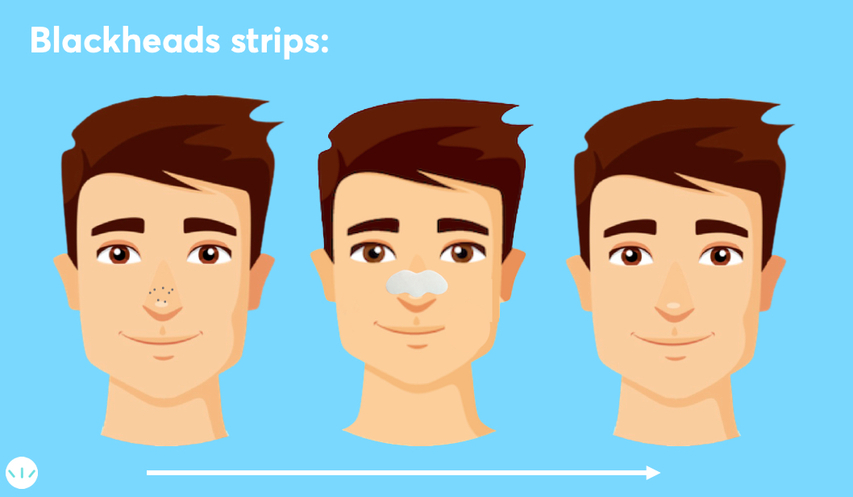The best way to remove and prevent blackheads

What Causes Blackheads?
Blackheads form when excess oil and dead skin cells collect in hair follicles, creating a clogged pore (comedo). When the pore remains open, oxygen oxidizes the trapped mixture, turning it dark and forming a blackhead.
Blackheads vs. Whiteheads
The main difference between blackheads and whiteheads is whether the clogged pore is open or closed. Open pores allow oxidation, resulting in a blackhead, while closed pores prevent oxidation, leaving the clog white in appearance (a whitehead).
Treatment Options for Blackheads
Salicylic Acid
This beta hydroxy acid (BHA) penetrates deep into pores to break down excess oil and dead skin, unclogging pores without damaging the skin barrier.
Retinol
Retinol (a form of Vitamin A) promotes cell turnover, clears pores, and prevents blackheads. Retinol products with 0.25-0.5% concentration combined with niacinamide are especially effective, as they also hydrate and reduce redness.
Manual Extraction
Though tempting, squeezing blackheads can introduce bacteria and damage the skin. Professional extractions or tools should be avoided unless performed by a dermatologist.
Pore Strips
Pore strips can temporarily remove blackheads but won’t prevent them. MDacne blackhead strips, made from plant-based fibers, are designed for sensitive skin, absorbing oil and debris while reducing irritation. Used alongside MDacne's customized skincare, they can help maintain clear, healthy skin.

Sebaceous Filaments vs. Blackheads
Sebaceous filaments are natural structures in pores that help move oil to the skin's surface. Unlike blackheads, they aren’t a form of acne and cannot be eliminated. However, their appearance can be minimized with salicylic acid cleansers, BHAs, and clay masks.
Preventing Blackheads
Cleanse Regularly
Use a gentle salicylic acid cleanser twice daily to remove oil and dirt without stripping the skin. After workouts, cleansing wipes can help reduce bacteria and sweat buildup.
Use Clay Masks
Clay masks detoxify and clear out pores, reducing redness and oil buildup. Use 2-3 times a week for best results.
Avoid Touching Your Face
Touching or picking your skin transfers bacteria and oil, increasing breakouts and risking scars.
Maintain a Balanced Diet
Limit high-glycemic foods, dairy, and gluten, which may exacerbate acne. Focus on foods rich in Vitamin E, omega-3 fatty acids, and antioxidants.
Choose Non-Comedogenic Products
Opt for lightweight, oil-free, or non-comedogenic skincare products to avoid clogging pores.
Why MDacne?
MDacne’s customized skincare products, including salicylic acid cleansers, medicated creams, and blackhead strips, target blackheads effectively while supporting overall skin health. Whether you’re preventing breakouts or addressing existing ones, MDacne provides gentle, dermatologist-tested solutions tailored to your unique skin needs.
For those battling blackheads, a consistent skincare routine, the right products, and a little patience are key to clearer, smoother skin.
References:
A double-blind, placebo-controlled evaluation of a 2% salicylic acid cleanser for improvement of acne vulgaris
Retinoids Are the Mainstay of Therapy for Acne
Significance of diet in treated and untreated acne vulgaris
Sebaceous filaments: What you need to know
To find the right acne treatments for your unique skin, take the free skin assessment by clicking here.



